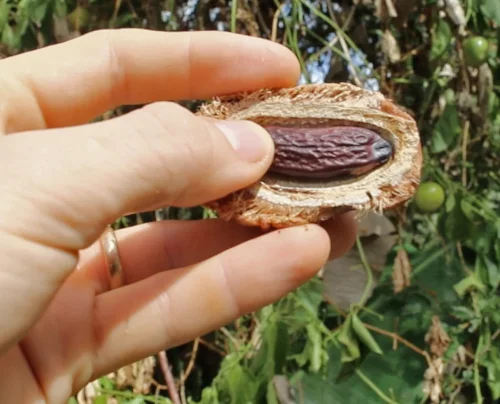Today we’re diving into a list of foods that America decided to ban from Europe. Yep, you heard it right, the land of the free has some food restrictions of its own. Brace yourselves for some food facts that’ll make you raise an eyebrow and go, “Seriously?!”
Let’s start with the Kinder Surprise egg.
It’s that famous chocolate treat with a hidden toy inside. Kids around the world love it, except in the US, where it’s banned.
Brits often tease Americans, thinking the ban is due to their supposed inability to resist chomping down on the entire chocolate treat, including the toy. But in reality, the ban was put in place even before Kinder Eggs existed. Back in 1938, the US decided to crack down on foods containing non-nutritive items after a tragic incident involving poisonous cough syrup. So, it’s more of an archaic law than an indictment on American self-control.

But fear not! The Kinder Joy swooped in as a semi-solution, offering a compromise with its separated toy and chocolate mousse combo. It may not possess the same element of surprise, but it’s a valiant attempt to meet the whims of both the law and the sweet-toothed masses.
Now, let’s explore the world of haggis for a moment.
This peculiar Scottish dish, with its mixture of oats, spices, and, yes, sheep’s innards, faces a sheepish ban in the US. The FDA decided to put its foot down, specifically on the inclusion of sheep lungs.

So, while Americans may be missing out on this traditional delight, they compensate with stacks of pancakes drenched in corn syrup masquerading as maple syrup. Talk about a culture clash on the breakfast table!
As for tonka beans, these little flavor powerhouses found themselves on the wrong side of the FDA’s list due to the presence of coumarin, a potentially toxic compound. The ban, enforced since 1954, hasn’t stopped adventurous gourmet chefs from sneaking these beans into their creations, leading to some dramatic kitchen raids by FDA agents. It’s like a foodie version of “Mission: Impossible” or a culinary cat-and-mouse chase.

Mustard oil’s forbidden status in the US is all about caution. Its high levels of arusic acid raised concerns about potential heart problems, prompting the FDA to wave its red flag. But hey, as long as it’s labeled “not for human consumption,” you’re free to get creative with alternate uses for it. Maybe it’s time to explore mustard oil as a moisturizer or a mysterious ingredient in your homemade art supplies.
Now, let’s talk about the controversial delicacy known as foie gras.
While the US isn’t entirely on board with force-feeding ducks or geese for their livers, certain states have taken a stand against this practice in the name of animal welfare.
California, for example, banned foie gras because of the inhumane forced feeding required to fatten the liver.
However, the French, known for their love of culinary indulgence, have shrugged off the ban and continue to savor this gastronomic delight. It’s a tale of diverging opinions and cultural contrasts, with both sides standing their ground.

Lastly, raw milk, the contentious liquid that divides the nation. The FDA’s concerns about foodborne illnesses have led to a federal ban on the interstate sale of unpasteurized milk.
But don’t worry, Arizona marches to the beat of its own drum and allows raw milk with a friendly warning label. It’s a nod to personal choice and perhaps a hint that Arizonans have a taste for living life on the wild side.
So, there you have it — a captivating journey through the world of banned foods. From chocolate surprises to forbidden flavors and controversial culinary practices, it’s a reminder that cultural differences and regulatory debates can spice up our culinary experiences.
Who knows what other gastronomic adventures lie in wait?
Stay curious, dear readers, and savor the thrill of exploring the forbidden fruit — or cheese — in this case!




















